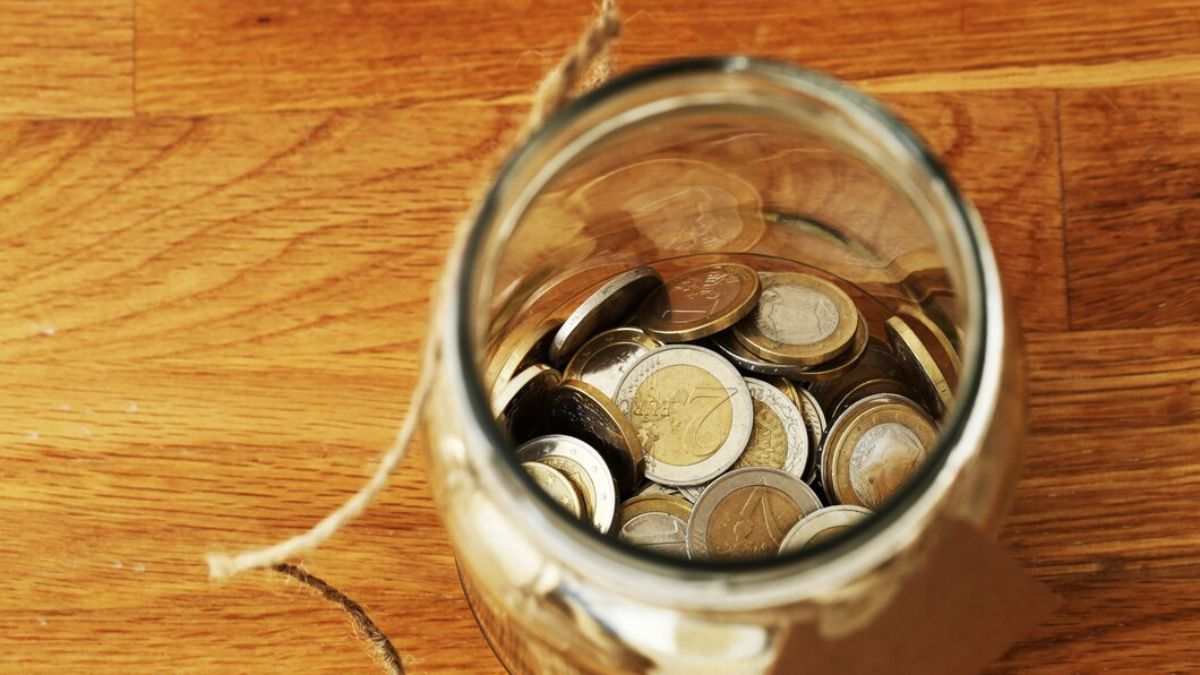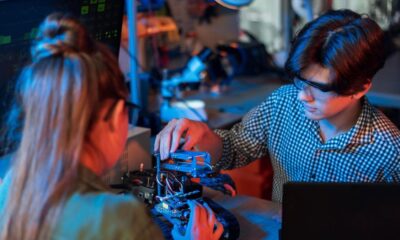BUSINESS
Finding Treasures in Your Change Jar Rare American Quarters You Might Have

Have you ever taken a closer look at the quarters in your pocket? Most of us toss them into our wallets or change jars without a second thought, but some quarters are worth far more than their face value. In fact, a few rare American quarters can be worth hundreds or even thousands of dollars to collectors. This post will guide you through the fascinating world of rare quarters, showing you which coins to watch for and the stories behind them.
The purpose of this blog is to help coin enthusiasts and curious readers alike identify valuable quarters and understand their worth. You don’t need to be an expert numismatist—a person who studies coins—to appreciate the history and value of these small treasures. By the end of this article, you’ll know what makes these quarters special and how to spot them in your own collection.
The Basics of Rare Quarters
Quarters, like all coins, go through a meticulous process before they come into our hands. But what makes some quarters rare? Often, it’s a combination of factors including limited mint runs, errors during production, or unique designs. These features can make even a single quarter precious to collectors.
The first step in identifying rare quarters is understanding the basic features of a quarter. Look for the mint mark, which tells you where the coin was struck, as well as the year it was produced. Both of these can be indicators of value. Some quarters are rare because only a limited number were made in a specific year or at a specific mint.
The 1916 Standing Liberty Quarter
One of the most sought-after quarters is the 1916 Standing Liberty quarter. Its rarity is due to its low mintage; only 52,000 were produced. Designed by Hermon Atkins MacNeil, this coin is notable for its depiction of Lady Liberty holding a shield and olive branch, symbolizing peace and preparedness.
These quarters were minted in Philadelphia, and finding one in good condition is rare. Collectors value them not just for their scarcity but also for their artistry. If you have a 1916 Standing Liberty quarter, it could be worth a significant amount, especially if it’s in mint condition.
The 1932-D and 1932-S Washington Quarters
Another example of rare quarters are the 1932-D and 1932-S Washington quarters. These coins were part of the first series to honor George Washington, and they were made in Denver and San Francisco, respectively. Due to the Great Depression, fewer quarters were needed, resulting in smaller production runs. Only 436,800 were minted in Denver and 408,000 in San Francisco.
Collectors seek out these quarters because of their historical significance and low mintage. If you spot a 1932 quarter with a “D” or “S” mint mark, it might be worth much more than 25 cents.
The 1955 Doubled Die Quarter
Errors during the minting process can also make quarters rare, as is the case with the 1955 Doubled Die quarter. This coin features a noticeable doubling of images or letters on one side. Such errors occur when coins are struck more than once with improper alignment.
While the doubling is more subtle than that seen on the famous 1955 Lincoln cent, it’s still a valuable error to look for. Coin collectors love these types of mistakes, and a 1955 Doubled Die quarter could fetch a pretty penny at auction.
The 1964 Silver Washington Quarter
Silver quarters from 1964 and earlier are often more valuable than their face value due to their silver content. In 1964, quarters were still made with 90% silver. However, the rising cost of silver led to a switch to a copper-nickel alloy beginning in 1965.
Collectors prize these older silver quarters both for their intrinsic metal value and historical importance. If you come across quarters from 1964 or earlier, it’s worth holding onto them as they can be more valuable than newer coins.
The State Quarters Error Coins
The release of the 50 State Quarters program from 1999 to 2008 led to millions of quarters entering circulation, some with errors that make them rare and collectible. Mistakes ranged from doubled dies to missing elements and fill errors, creating a unique market for these quarters.
Among the state quarters with notable errors are the 2004 Wisconsin quarter with an extra leaf on the corn and the 2005 Minnesota quarter with extra trees. These anomalies can make these quarters much more valuable to collectors and enthusiasts alike.
The 1976 Bicentennial Quarter
The 1976 Bicentennial quarter is another coin that catches the eye of collectors. It features a special reverse design celebrating the United States’ 200th anniversary. Although not all Bicentennial quarters are rare, those in uncirculated or proof condition are highly sought after.
What makes this quarter special is its design, which includes a colonial drummer boy and a torch encircled by 13 stars representing the original colonies. If you have one of these in pristine condition, it could be worth more than a quarter.
The 2009 District of Columbia and U.S. Territories Quarters
In 2009, the U.S. Mint released a special series of quarters featuring the District of Columbia and U.S. territories like Puerto Rico and Guam. These quarters are less likely to be found in circulation, increasing their collectible value.
Due to the economic recession of 2008-2009, fewer quarters were produced overall, making the 2009 series particularly rare. Collectors often seek these quarters for their unique designs and limited availability.
Identifying Rare Quarters in Your Collection
To identify rare quarters, it’s essential to examine your coins closely. Start by checking the mint mark and date, then look for any unusual features or errors. A magnifying glass or loupe can help reveal details that are not immediately visible to the naked eye.
It’s also wise to consult resources such as coin collecting books or websites for more information on specific quarters and their value. Engaging with a local coin club or attending coin shows can provide additional insight into your collection and potential rarities.
Caring for Your Rare Quarters
Maintaining the condition of your rare quarters is crucial for preserving their value. Store them in protective holders or cases to prevent scratches and wear. Avoid cleaning coins, as this can damage the surface and decrease their value.
Consult with a professional numismatist if you’re unsure about the best way to care for or sell your coins. Their expertise can guide you in making the right decisions about preserving or selling valuable quarters.
Where to Sell Rare Quarters
If you decide to sell your rare quarters, there are several avenues to explore. Coin dealers, auctions, and online platforms like eBay can provide opportunities to sell your coins to interested buyers. It’s essential to research and know the market value of your coins before selling.
Professional appraisal services can give you a better understanding of your coins’ worth. With the right information and strategy, you can successfully sell your rare quarters for a fair price.
Conclusion The Hidden Value in Everyday Change
Rare American quarters offer a fascinating glimpse into history and hold significant value for collectors. By familiarizing yourself with these coins, you can discover hidden treasures in your own collection or change jar. Whether you’re a seasoned collector or a curious novice, there’s always something new to learn about the world of rare quarters.
If you’re eager to explore further, consider joining a coin collecting community or attending local coin shows to expand your knowledge and network. Happy hunting, and who knows—you might just find a fortune in your spare change!

BUSINESS
What You Need to Know About the 72SOLD Lawsuit

If you’re in the real estate market or have been keeping an eye on innovative home-selling programs, you might have come across 72SOLD. Known for its fast home-selling approach and catchy advertisements, the program claims to sell homes quicker and for higher prices than traditional methods. While it has attracted attention and praise for its unique model, it has also recently been the subject of a lawsuit—raising questions about its practices.
If you’re wondering what the lawsuit is about, how it affects 72SOLD’s operations, and what it means for buyers, sellers, and real estate agents, you’re in the right place. This blog breaks down everything you need to know in clear and simple terms.
What is 72SOLD?
Before we jump into the lawsuit, it’s worth understanding what 72SOLD is and why it’s gained popularity in real estate circles.
Founded by Greg Hague, 72SOLD offers a streamlined home-selling process that aims to sell properties within 72 hours. Rather than going through a traditional home-selling timeline with open houses, individual showings, and weeks (or months) on the market, the program focuses on marketing homes in a way that creates competition among buyers.
The process works like this:
- Sellers contact 72SOLD or an affiliated real estate agent.
- The property is professionally photographed and marketed extensively.
- Potential buyers are invited to tour the property within a short time frame (typically over a weekend).
- A final offer is negotiated quickly, often by the 72-hour mark.
The system promises higher offers and faster closings, relying on the urgency created by its exclusive marketing approach. But such a bold and unique selling method has also brought scrutiny.
What is the Nature of the 72SOLD Lawsuit?
The lawsuit in question primarily challenges the advertising and claims made by 72SOLD in their marketing campaigns. Critics allege that:
- Misleading Claims: Some opponents have accused 72SOLD of making promises—such as higher home valuations and faster sales—that they can’t consistently deliver.
- Unfair Trade Practices: The lawsuit also includes complaints regarding how 72SOLD may have exaggerated its marketing materials, leading sellers to believe they would receive unparalleled results that don’t align with traditional market realities.
The allegations aim to evaluate whether 72SOLD accurately represents its program’s results or uses aggressive advertising techniques that could be considered misleading.
It’s important to note that these are allegations, and the case is ongoing. At this stage, no court has determined whether 72SOLD is guilty of the accusations or if the claims against them hold merit.
Impact of the Lawsuit on Buyers and Sellers
If you were considering 72SOLD to sell your home or buy a property, you’re probably wondering how the lawsuit might impact you. Here’s what you need to know:
For Home Sellers
- Transparency in Results
While the lawsuit challenges whether 72SOLD’s claims are achievable across the board, it’s worth asking pointed questions about whether the program is suitable for your property. Ask for references, verified testimonials, and data to confirm that their promises apply in your neighborhood and price bracket.
- Your Experience May Vary
One key takeaway from the lawsuit is that individual experiences with 72SOLD might vary. While one seller might achieve a quick, above-market sale, others might not experience the same benefits, depending on market conditions and other factors.
For Home Buyers
- A Competitive Environment
If you’re a buyer, the urgency created by 72SOLD’s system might force you to make quicker decisions than you usually would. This could work against buyers who need more time to compare options or secure financing.
- Limited Window for Viewing
The program’s condensed timeline could also mean fewer opportunities to view the home or perform due diligence, so buyers need to be extra cautious.
Pros and Cons of 72SOLD
To help you make an informed decision, here’s a quick summary of the strengths and potential drawbacks of the 72SOLD approach.
Pros
- Speed
The biggest appeal of 72SOLD is its ability to sell homes quickly. Sellers looking for lightning-fast results (e.g., due to relocation or financial needs) may find the program ideal.
- Convenience
By eliminating extended timelines and open houses, 72SOLD streamlines the process and saves sellers significant time and effort.
- Higher Offers for the Right Homes
For properties in demand or in hot markets, creating buyer competition could yield higher-than-expected offers in some cases.
Cons
- Potential for Experiences to Differ from Ads
The lawsuit underscores that some experiences may fall short of the marketing promises. Sellers should carefully vet whether the system will work for their unique situation.
- Limited Room for Negotiation
The short timeline creates urgency but also leaves less room for negotiation. Buyers and sellers alike may feel rushed or pressured by the accelerated process.
- Not Ideal for Every Market
Markets with lower demand or more niche homes may not benefit as much from 72SOLD’s compressed timeline and competitive structure.
Practical Tips if You’re Considering 72SOLD
Whether or not the lawsuit changes your opinion of 72SOLD, here are some best practices if you’re thinking of selling your home through their program:
- Ask Questions
Request data specific to your home’s neighborhood, recent sales with similar properties, and the agent’s track record using 72SOLD.
- Seek Testimonials
Previous clients’ experiences can be valuable when deciding whether to proceed.
- Do Your Homework
Compare 72SOLD with other real estate agents or alternative programs in your area.
- Be Cautious with Contracts
Thoroughly review any contracts, especially exclusivity agreements or conditions related to marketing costs.
- Trust Your Instincts
If something feels too good to be true, it might be. Take time to ensure your decision aligns with your goals.
What This Lawsuit Could Mean for the Future
The 72SOLD lawsuit could have bigger implications for the real estate industry. If found to have exaggerated or misrepresented its promises, it could prompt stricter regulations around advertising claims and transparency for real estate programs.
However, if the claims are dismissed, it could reinforce 72SOLD’s credibility and solidify its innovative approach in a competitive industry.
Final Thoughts
The 72SOLD lawsuit may raise questions, but at its core, it’s a lesson in doing your due diligence as a buyer, seller, or participant in any real estate program. While fast home sales and competitive pricing are alluring, it’s essential to understand the trade-offs and investigate whether the model is the best fit for your specific circumstances.
If you’re still on the fence, consider reaching out to trusted real estate professionals or researching alternatives to ensure you make the most informed choice possible.
BUSINESS
How Make1M.com Can Help You Achieve Financial Freedom

Are you ready to transform your financial future? Make1M.com is here to help you on your journey to achieving your first $1 million—whether in savings, investments, or revenue from your business. This comprehensive platform combines expert insights, actionable advice, and powerful tools to empower you to take control of your finances and set yourself up for long-term success.
This guide will take you through everything you need to know about Make1M.com—what it offers, who it’s for, and how you can use it as a step-by-step blueprint to reach your financial goals.
Why Financial Freedom Starts with a Plan
Achieving financial independence doesn’t happen by chance; it requires planning, determination, and the right resources. Many people dream of reaching that elusive “million-dollar milestone” but feel overwhelmed by where to start or how to stay consistent.
That’s where Make1M.com makes a significant difference. It’s not just a website; it’s a community and a resource hub designed for individuals who are serious about turning their financial dreams into reality.
What Is Make1M.com?
Make1M.com is a platform created to inspire and guide users on how to generate or accumulate $1 million. It serves as a practical roadmap for building wealth, providing insights in a simplified, accessible way for anyone—from entrepreneurs and professionals to side hustle enthusiasts and first-time investors.
Here’s what you can expect from the platform:
- Step-by-Step Financial Guides
It breaks down complex wealth-building strategies into bite-sized, actionable steps.
- Tools and Resources
Access templates, calculators, and interactive planners tailored to help track and achieve your specific financial goals.
- Success Stories for Inspiration
Real-life stories from people who’ve successfully hit their $1 million target, offering motivational insights into their strategies.
- Community Forums
Connect with others on the same path in a supportive environment focused on actionable advice and collaboration.
Who Is Make1M.com Designed For?
Make1M.com is built for dreamers and doers alike. If you fall into any of the following categories, this platform might just be your new go-to resource for financial growth.
- Entrepreneurs and Business Owners
Learn how to scale your revenue, manage your expenses, and reinvest profits to grow your business to $1 million and beyond.
- Freelancers and Side Hustlers
Discover how to turn passion projects and extra gigs into steady and lucrative income streams.
- Young Professionals
Take control of your salary and invest wisely early on to set yourself up for future wealth.
- Anyone Seeking Financial Freedom
Whether your goal is to pay off debt or make smart investments, Make1M.com is packed with advice for every stage of the wealth-building process.
The Core Features of Make1M.com
1. Actionable Financial Strategies
One of the greatest challenges of wealth-building is simply knowing where to start. The platform’s in-depth guides map out step-by-step strategies tailored to your specific income and circumstances.
- Budgeting Basics
Find out how to master your personal or business budget to create room for growth. The site’s budgeting tools allow you to allocate funds wisely.
- Investment Tutorials
Build your portfolio with tutorials on real estate, stocks, mutual funds, and more. Whether you’re a seasoned investor or just starting, these tips make investing more approachable.
- Passive Income Plans
Leverage tactics to generate passive income through online ventures, rental properties, and dividend investments.
2. Interactive Tools for Financial Tracking
Keeping tabs on progress is key to success. Make1M.com offers tools like the following to make tracking financial growth an engaging process rather than a chore:
- Million-Dollar Calculator
Input your current savings, income, and investments to determine how long it will take you to reach $1 million.
- Goal-Setting Planner
Break down your $1 million goal into monthly, quarterly, or yearly milestones, helping you stay on track.
3. Exclusive Expert Tips
Make1M.com works with finance experts to bring you insights that you won’t find on mainstream blogs. These tips are designed to maximize efficiency and minimize risk as you work toward your target. Topics include taxation, wealth protection, and advanced investment strategies.
4. A Thriving Community
Part of the platform’s charm lies in its community. Members regularly share their financial wins, challenges, and best practices, helping others stay motivated. Access forums where you can ask questions, get answers, and participate in group challenges to keep you focused.
5. Real-Life Success Stories
Reading about others’ success can be a game-changer. Make1M.com highlights stories from all walks of life—freelancers, small business owners, and professional investors—demonstrating that the path to $1 million isn’t one-size-fits-all.
Practical Steps to Get Started on Make1M.com
Step 1: Sign Up for Free
Visit Make1M.com and create a free account to access the platform’s free tools and community features.
Step 2: Define Your Goal
Are you looking to save $1 million, invest, or generate revenue? Clarify your goal to customize your experience on the platform.
Step 3: Use the Million-Dollar Calculator
Input your current financial details to get a clear idea of the road ahead.
Step 4: Explore Expert Content
Browse through the guides and tutorials to determine which strategies resonate with you.
Step 5: Join the Community
Introduce yourself in the forums, ask questions, and make connections with like-minded wealth builders.
Step 6: Take Action and Track Progress
Act on the insights you’ve gained and use the platform to continuously monitor your growth toward the big $1 million.
Common Questions About Make1M.com
Is Make1M.com free to use?
Yes! The basic tools, guides, and forums are free to access. Premium features, like personalized coaching or advanced financial calculators, come with a small subscription fee.
Can a beginner use Make1M.com?
Absolutely. The platform is designed to be beginner-friendly, simplifying complex concepts with easy-to-understand language and real-life examples.
Is the $1 million goal realistic?
Yes! While the timeline will vary based on individual circumstances, focusing on actionable steps and consistency makes this goal achievable.
The Takeaway
The path to your first $1 million doesn’t have to be overwhelming or unattainable. With Make1M.com, you gain access to the tools, insights, and support needed to turn your financial goals into a reality.
It’s time to take charge of your finances and start building the future you’ve always dreamed of. Sign up for free today, and take the first confident step toward your $1 million milestone!
BUSINESS
Unlocking Success with Titanium Invest Consulting

Navigating the complexities of finance can be overwhelming, but TitaniumInvest.com Consulting is here to simplify the process. Designed to empower both novice and experienced investors, Titanium Invest delivers expert advice, tailored strategies, and actionable insights to drive smart decision-making. Whether you’re diversifying your portfolio, mastering market trends, or setting long-term financial goals, Titanium Invest Consulting can take your investment game to the next level.
What Is Titanium Invest Consulting?
Titanium Invest Consulting offers specialized financial guidance backed by decades of market expertise. As a leading resource in investment strategy and analysis, this platform empowers individuals and organizations to make informed financial choices. From foundational principles to advanced market insights, Titanium Invest ensures you have the tools to succeed in a competitive global economy.
Why Choose Titanium Invest Consulting?
1. Comprehensive Coverage of Financial Topics
Whether you’re curious about beginner investment tips or complex market analysis, Titanium Invest covers it all. Popular topics include:
- Investment Basics – Learn the core principles of investing, risk tolerance, and portfolio building.
- Market Trends and Analysis – Stay informed about industry-specific movements and global market shifts.
- Diversified Investment Options – Explore everything from real estate to cryptocurrency, ETFs, and bonds.
2. Expertise That Simplifies Complex Concepts
Finance doesn’t have to be daunting. Titanium Invest Consulting explains intricate financial strategies in straightforward, digestible language, suited for beginners and pros alike.
3. Risk Management Guidance
Understanding risk tolerance is crucial to financial success. Through insightful articles, tools, and resources, Titanium Invest helps users assess and mitigate risks effectively while remaining aligned with their goals.
4. Accessible for All Investors
The platform is designed to cater to diverse audiences, from small investors seeking guidance on their first stock purchase to seasoned professionals optimizing multi-million-dollar portfolios.
Key Areas of Focus in Titanium Invest Consulting
1. Customer-Centric Investment Strategies
Titanium Invest Consulting starts with the investor’s unique profile. Every strategy is tailored to individual goals, risk tolerance, and time horizons. This ensures maximum efficiency and adaptability to market fluctuations.
- Example: Curious about long-term wealth building? Titanium Invest offers step-by-step guides for building a diversified, resilient portfolio.
2. Actionable Market Insights
Market analysis is pivotal for smart investing. Titanium Invest routinely publishes detailed insights to help users decode emerging financial trends.
- Example: Discover how inflation impacts global markets and how you can adjust your portfolio accordingly.
3. Tools for Success
Titanium Invest provides digital tools designed for modern investors, such as calculators, risk assessment quizzes, and step-by-step portfolio tutorials.
- Example: Use their stock screening tool to identify undervalued assets in sectors like technology or sustainable energy.
4. Long-Term vs. Short-Term Goals
Are you focused on retirement planning, or are you seeking quick returns? Titanium Invest Consulting equips you to make informed decisions based on your timeline and expectations.
- Example: Learn when to diversify and when to consolidate your portfolio to meet specific benchmarks.
Applications of Titanium Invest Consulting
Titanium Invest shines in several key financial areas. Here’s how it supports critical business functions and personal financial goals alike:
1. Portfolio Management
Create a balanced portfolio using Titanium Invest’s powerful tools and resources. With insights into diversification and sector-specific trends, you’ll master the art of growth-focused investing.
2. Market Research
Stay ahead of the curve with in-depth market analyses. Whether it’s economic policy changes or emerging technologies, Titanium Invest breaks down complex data into actionable takeaways.
3. Investor Education
From beginners learning to open their first brokerage account to experts refining advanced techniques, Titanium Invest serves as a one-stop knowledge hub.
4. Risk Reduction
Avoid pitfalls with Titanium Invest’s guides on mitigating risks in volatile markets. Tailored to individual financial personalities, their advice helps investors handle uncertainty with confidence.
How Titanium Invest Builds Community
Joining Titanium Invest means becoming part of a larger community of like-minded individuals passionate about financial growth. Through personalized webinars, online discussions, and exclusive newsletters, Titanium Invest fosters collaboration and learning. It’s not just financial advice—it’s a financial movement.
How to Get Started with Titanium Invest Consulting
- Visit TitaniumInvest.com to browse their extensive range of free and premium resources.
- Use their advanced investment tools to assess your portfolio’s strength.
- Subscribe to their mailing list for weekly market updates and expert tips.
Shape Your Financial Future Today
Titanium Invest Consulting is more than just a resource; it’s a catalyst for your financial success. Whether you’re an individual investor building a nest egg or a business optimizing its financial strategy, Titanium Invest offers the expertise, tools, and insights needed to succeed.
Take the next step in your financial journey today and explore what Titanium Invest Consulting can do for you.
-

 TECHNOLOGY5 months ago
TECHNOLOGY5 months agoRevo Technologies in Murray Utah Leading the Charge in Tech Innovation
-

 NEWS5 months ago
NEWS5 months agoKuttymovies7: Everything You Need to Know
-

 CRYPTO5 months ago
CRYPTO5 months agoCrypto Goldmine Exploring FintechZoom’s Top Picks
-

 TECHNOLOGY5 months ago
TECHNOLOGY5 months agoRiding the Waves of Innovation Deep Offshore Technology’s Impact on Ocean Exploration
-

 NEWS5 months ago
NEWS5 months agoThe Secret World of CFBWH and Why It’s Taking Over
-

 EDUCATION5 months ago
EDUCATION5 months agoThe Future of Learning with Educational Assistants
-

 NEWS5 months ago
NEWS5 months agoShari Ann Chinnis Indianapolis: A Profile in Passion and Dedication
-

 CRYPTO5 months ago
CRYPTO5 months agoExploring the World of Cryptocurrency with NewZnav